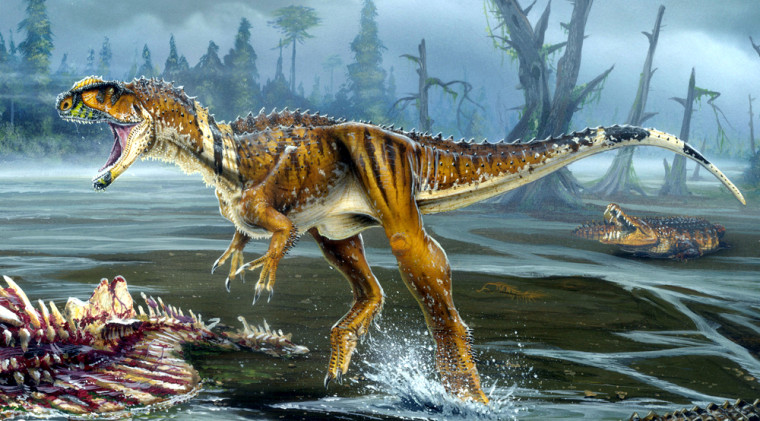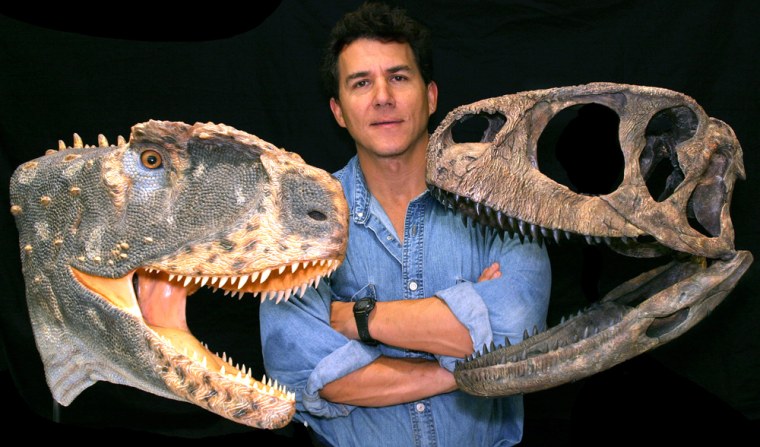The fossil skull of a peculiar, wrinkle-faced dinosaur unearthed four years ago in the Sahara is providing new evidence that Africa split from the other southern continents more recently than previously thought, scientists say.
“It was sort of a missing puzzle piece that serves to banish the notion that Africa was isolated earlier,” said Paul Sereno, a University of Chicago paleontologist who led the dinosaur-hunting expedition to a remote, desert region of Niger in 2000.
“It really completes the story very convincingly,” he said.
‘First wrinkle face’
The skull, found amid a wealth of dinosaur bones from the late Cretaceous period, came from a dinosaur Sereno named Rugops primus, or “first wrinkle face.” The meat-eater, believed to be about 30 feet (9 meters) long and 95 million years old, belonged to a group of southern dinosaurs called abelisaurids.
Before the discoveries, abelisaurids from that period had been found in South America, Madagascar and India, but none had been confirmed on Africa, supporting a theory that Africa split off first from the southern super-continent of Gondwana 120 million or more years ago.
The new fossil, however, and its close relation to a South American abelisaurid, indicate Africa was still connected to the other southern land masses, at least by a land bridge, 100 million years ago, Sereno and his co-authors said.
‘Valley of the Kings’
Sereno and his team were nearing the end of a 2½-month expedition when they focused on a football-sized area in a remote region of the Sahara. In a span of 10 days, he said, they dug up more dinosaurs of the early part of the Late Cretaceous period than the total of what had been found in Africa before.
“It was like the Valley of the Kings, except the kings were dinosaurs,” Sereno said. He said the team also found previously unknown species of crocodiles and a yet-to-be-named dinosaur that was about 60 feet (18 meters) long.

“Sometimes you run into the pot of gold,” he said. “That expedition I think was per pound of discovery the greatest expedition I ever took students on.”
Sereno, University of Chicago colleague Jack Conrad and Jeffrey Wilson of the University of Michigan published news of the finding, along with the discovery of another new species of dinosaur, in the edition of Proceedings of the Royal Society of London to be released Wednesday.
Sereno said Rugops probably was a scavenger that used its long snout to pick at carrion. One odd feature of the dinosaur, he said, was two rows of seven holes along its snout.
“It’s the most peculiar thing. We don’t know what was growing out of there,” Sereno said.
He said it was probably something ornamental, perhaps a fleshy crest.
